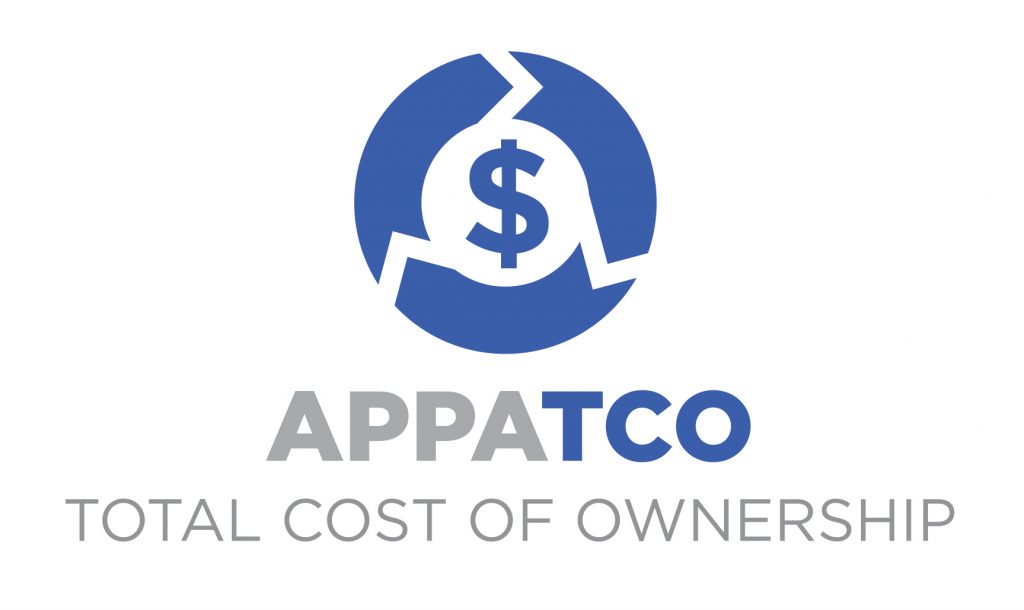
APPA 1000-2 – Total Cost of Ownership for Facilities Asset Management (TCO) – Part 2: Implementation and Data Elements
ANSI Approved 1/3/2020
Demands on asset managers to maintain the mission of the organization while meeting the requirements of increasingly more diverse consumers, escalating budgetary realities, and the threat of failure from aging assets require an asset management professional’s response to be beyond the ‘business as usual’ model.
Total Cost of Ownership (TCO) brings a new strategy that allows financial administrators to have full knowledge of an investment: how the investment is operating, how the investment is performing, how much additional financial commitment will be needed throughout the life-cycle of the investment, and when to best recapitalize the investment in the asset. The impacts of consistent or occasional noninvestment can also be analyzed for long-term overall impact.
TCO assists an organization with three major asset decisions:
- New product, facilities, and infrastructure asset selection decisions
- Existing facilities and infrastructure asset renovation or removal decisions
- Short- and long-term financial planning, budget analysis, and reporting.
This standard builds on the work found in Total Cost of Ownership for Facilities Asset Management (TCO) – Part 1: Key Principles Total Cost of Ownership. The TCO formula and the interdependency and interrelatedness of each principle is critical to the success of TCO implementation.
TCO Framework and Formula
TCO is a holistic approach that assists organizations by creating collaborative partnerships across an organization to join information, personnel, and resources to transform the facilities professional culture. TCO rests on a framework that organizes the entire total cost of ownership of any asset. Successful implementation requires a TCO framework, shown in Figure 1, to ensure all elements are included and used to make the best decisions for the asset management of objects, assets, facilities, and infrastructure.
The TCO formula becomes the basis for implementation where aggregated costs inform all decisions at all levels of purchasing, owning, or removing an asset.
Where:
Ca = Initial Asset Costs / First Cost (One Time)
Cb = Cost of Operations and Maintenance (Recurring)
Cc = Cost of Utilities (Recurring)
Cd = Cost of Renewal (Recurring)
Ce = Cost at End of Useful / Functional Life (One Time)
TCO Implementation – Interdependency and Interrelatedness of Key Principles
- Integrity principles build a core of reliability for data collection, maintenance, verification, sharing, and reporting.
- Foundation principles create the basis for implementation: what data, where data is housed, and how to categorize data.
- Information Gathering principles sustains asset data as current and actionable with information pertinent for decision making: cost, inspection or assessment, and performance of the asset(s).
- When all these principles are accomplished, reliable knowledge-based Decision Making is the result.
Successful implementation hinges upon:
Costing Elements – each elementbe a present (actual), past (actual), or future (estimated) value, that must be synchronized, such that when stating the overall value of TCO it is clear what time reference the value of TCO represents.
Annualized View – TCO is best visualized and presented on an annualized basis over the years of the study.
Depth of Detail – organization maturity of data collection and management balanced with value of the data determines the level of data detail. Stated as a total TCO is difficult to internalize.
Criteria and Assumptions – TCO relies on criteria and assumptions. Documentation and adjustment may be needed over time and that should not require recollection of the data.
TCO Maturity – Organizations will be at various levels of maturity in their TCO implementation strategies: no alignment with TCO, entry-level implementation, mid-level implementation, or a fully integrated level of TCO implementation. While full implementation may be the goal, the benefits of basic or intermediate levels of maturity will also be valuable. Organizations should use this document to implement TCO at their desired level and pace with a goal of balancing value with effort and available resources.
Supporting Elements for TCO Implementation
- TCO must be adopted by leadership and embraced by the organization
- TCO must align with the mission of the organization, university, institution, or agency
- TCO requires a full review of the current organizational standing
- TCO requires transparent information flow and exchange
- TCO principles call for a management system that collects and distributes information
- TCO is meant to be scalable
- TCO requires a decision on the time and effort to be invested relative to the value of TCO
- TCO requires an organization to make fiscal and organizational decisions
 Create an Account
Create an Account
 Login/myAPPA
Login/myAPPA
 Bookstore
Bookstore
 Search
Search  Translate
Translate